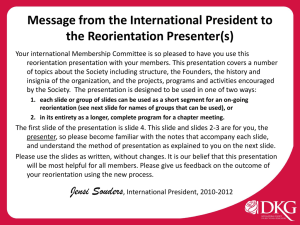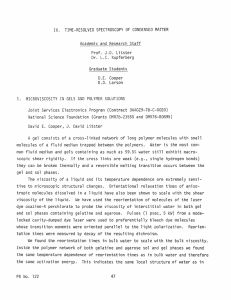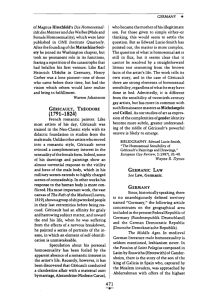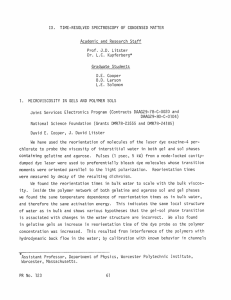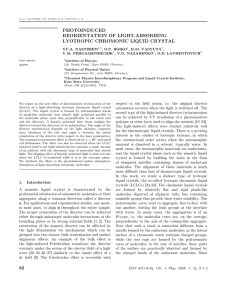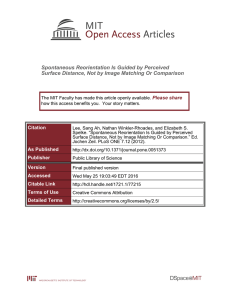File - Sophie Stolk
advertisement
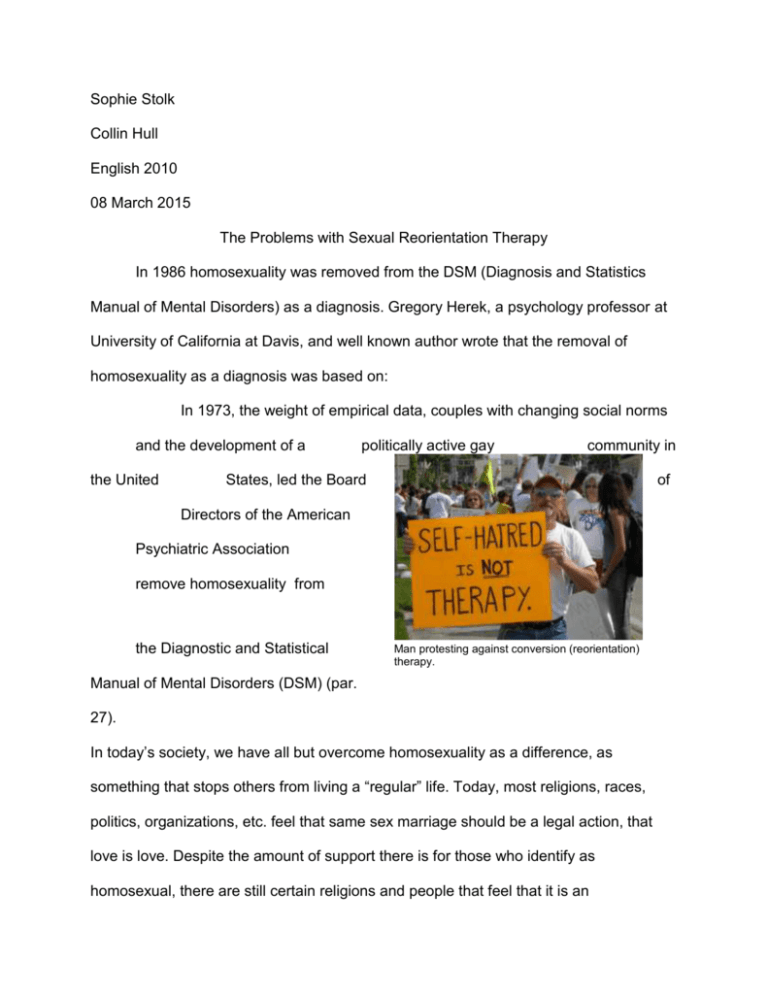
Sophie Stolk Collin Hull English 2010 08 March 2015 The Problems with Sexual Reorientation Therapy In 1986 homosexuality was removed from the DSM (Diagnosis and Statistics Manual of Mental Disorders) as a diagnosis. Gregory Herek, a psychology professor at University of California at Davis, and well known author wrote that the removal of homosexuality as a diagnosis was based on: In 1973, the weight of empirical data, couples with changing social norms and the development of a the United politically active gay community in States, led the Board of Directors of the American Psychiatric Association remove homosexuality from the Diagnostic and Statistical Man protesting against conversion (reorientation) therapy. Manual of Mental Disorders (DSM) (par. 27). In today’s society, we have all but overcome homosexuality as a difference, as something that stops others from living a “regular” life. Today, most religions, races, politics, organizations, etc. feel that same sex marriage should be a legal action, that love is love. Despite the amount of support there is for those who identify as homosexual, there are still certain religions and people that feel that it is an abomination. Despite the historic steps that we have made there are still those that believe that one can be “cured” of their sexual orientation (if one identifies as homosexual). The problem with this belief is that most evidence that come from studies done on reorientation don’t support it being an effective or reasonable option; therefore not being an option that one should look towards. The arguments that stem from those that feel reorientation therapy should not be used anymore are; it is seen as a form of abuse on the individual, and as stated before - has been shown to be very ineffective in its mission. From these two main arguments it is easy to propose that reorientation therapy be stopped all together, or (in the worse case - so to speak) have certain restrictions/bans. One of the biggest arguments against reorientation therapy is that it is seen as a form of abusive on/towards an individual. Most of the studies that are done to support this are done on youths that have experienced reorientation therapy and the negative outcomes. The types of treatments that are used seem completely obscene and are seen as physical torture by some. An article done by Laura Hein and Alicia Matthews states some of the type of treatments used: (a)various talking-based therapies: individual and group (Beckstead & Morrow, 2004; Ford, 2001; Socarides, 1995; Williamson, 2008; Yarhouse et al., 2002); (b) electric shocks to the torso, hands, or genitals (faradic therapy) while exposing the client to homoerotic material (Beckstead & Morrow; Cox, 2000a; Ford); (c) exorcism (Besen, 2003; Ford; Human Rights Campaign, 2000; Killian, 1996); (d) covert sensitization—imagining an erotic situation and pairing this with something revolting or terror inducing (Foucher, 2007; Human Rights Campaign; Summers, 2000; Williams, 2005) and/or administration of emetics while homoerotic material is presented (Penn, 2007); (e) restraints and isolation (Summers); and (f) gender modification therapy (training in how to behave more heterogender-congruent: male coaching in sports activities; and female training in coiffing or cosmetics application) (Beckstead & Morrow; Cox; Human Rights Campaign) (32). I feel that this is the biggest, most outstanding piece of evidence to support the argument of abuse. It shows the ways that one can be physically abused for something that does not even need to be changed. No individual deserves to be shocked to be turn straight, no individual needs to have training on how to behave more like a heterosexual individual. Physical abuse is not the only standing issue with reorientation therapy, we also run into mental abuse as a negative outcome. Works Citied Herek, Gregory M. "Homosexuality and Mental Health." Homosexuality and Mental Health. N.p., n.d. Web. 24 Feb. 2015. Hein, Laura C., and Alicia K. Matthews. "Reparative therapy: The adolescent, the psych nurse, and the issues." Journal of Child and Adolescent Psychiatric Nursing 23.1 (2010): 29-35. Images Citied Image 1: http://www.soc.ucsb.edu/sexinfo/article/conversion-therapy Image 2: http://healthcareguild.com/humor.html

